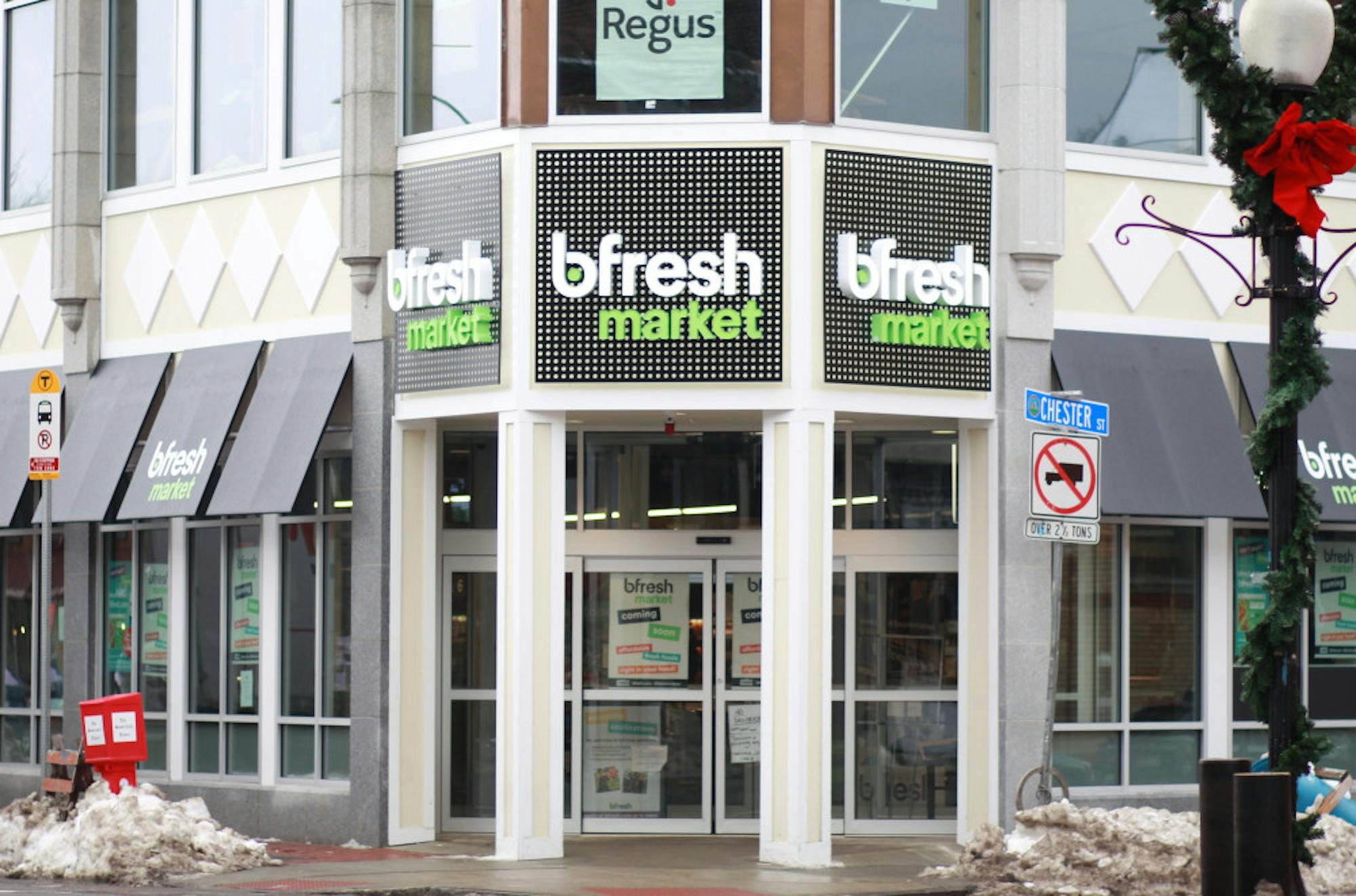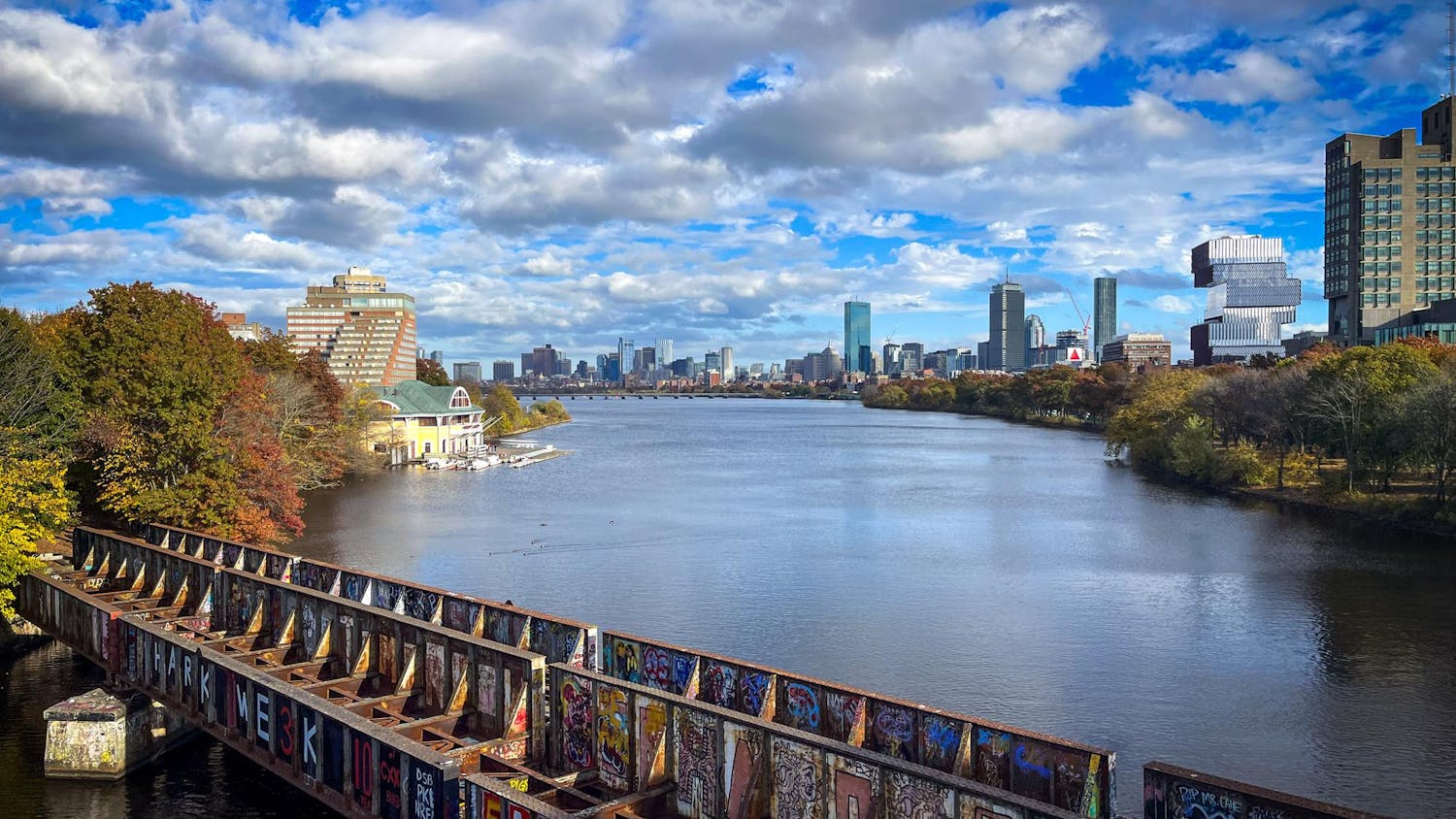In March 2016, Johnny D’s Uptown, a jazz club that often provided a platform for local and alternative musicians, closed its doors for good. According to a March 10, 2016Boston Globearticle, Johnny D’s opened in 1969 and had become a Davis Square institution in its 47 years of operation.
A couple of months ago, in January 2017, Oat Shop, the Boston area’s first oatmeal-themed café, opened up just around the corner from the now-shuttered Johnny D’s, according to a Jan. 28 Dailyarticle.
Once home to a McDonald's and a standalone Dunkin' Donuts, the storefronts of Davis Square have since changed to accommodate different clientele. Today, the former site of McDonald's — which closed in 2013 — is home to Meju Korean Kitchen, and Dunkin' Donuts now shares store space with bfresh market.
Much like the housing market of West Somerville, Davis Square itself has seen rising property value and changing demographics in recent years. This trend reflects a changing Somerville, which was humorously known as “Slummerville” during its tougher years, but has since undergone significant gentrification and economic development.
A May 21, 2012 WBUR News articlecited an influx of students and young professionals, the proximity to Boston and the MBTA extension project which brought a Red Line stop to Davis Square in 1984 as reasons for the development of Somerville. The Red Line extension especially made the location of Davis Square more accessible to Boston and surrounding communities.
Despite these changes, one business that has remained in Davis Square over the years is McKinnon’s Meat Market, which opened its doors in 1965.
Jimmy Kontos, the co-founder and former owner of McKinnon’s, said that when he helped open the store in 1965, Davis Square was undergoing a similar kind of boom. He also witnessed the decline of the neighborhood after a recession in the early 1970s.
“I saw the ups and downs of the square,” Kontos said. “When I first opened up, the square was booming. There were a lot of department stores."
The neighborhood experienced subsequent economic decline, and many businesses closed, according to Kontos.
“It was left like a ghost town,” he said.
Kontos said that during his many years in DavisSquare, he sought to maintain McKinnon’s as a reliable establishment.
“McKinnon's has pretty much been an icon in the square,” Kontos said. “My motto was 'the finest quality available at the lowest possible cost.' And it worked for me very well.”
Since the time McKinnon’s was founded, only a few businesses have endured the test of time.
“The bar next to me, Sligo, was there before me,” Kontos said. “The other business that might have been there — it's changed hands several times — is the smoke shop down the middle of the square.”
Over the years that Kontos worked in Davis, he saw numerous developments that brought change in the area.
“I think the subway was a big part of the square being what it is today,” he said. “It got busier, and the demographics have a lot to do with it. Between Cambridge, Harvard, Tufts, Davis Square is booming.”
He pointed to rising rents as another reason for change among businesses.
“To rent a place in Davis Square, you're better off to rent in Harvard Square,” he said. “That's the kind of money they're asking for rents. Somerville, especially West Somerville, is on fire.”
Kontos, nevertheless, sees Davis Square’s desirability and development in a positive light. He pointed to the newly opened bfresh market across the street from McKinnon’s, which some would see as competition, as an economic benefit.
“To me, it's an asset, because they cannot compete with us on meats,” he said. “So if anything, maybe it'll bring more people in the square. Competition brings the best out of you.”
While some traditional businesses have closed down, others have lived on in other ways.
Sacco’s Bowl Haven opened in 1939 in Davis Square. It was founded by the Sacco family, who were at one point the proprietors of 19 candlepin bowling alleys. The Davis Square location was the last of their bowling alleys to remain open. In 2010, the FlatbreadCompany took over the bowling alley and added a pizza restaurant on the premises, according to a Jan. 26, 2010 Boston Globe article.
Greg Norstrom, a cook for Flatbread, had moved to the area to help open the Davis Square location after having worked for Flatbread for several years. Initially, when the business was transitioning from the old Sacco’s, Norstrom saw some locals view the change with hesitance.
“It was interesting, cause a lot of the older people, or the people that were kind of fitting that stereotype — you could kind of tell — a lot of them were like, 'What is this place, you've changed an establishment,’ he said. “But, from what I hear, hardly anyone came in here before we moved in.”
Mishla Baz, who is a senior at Tufts and resident of Somerville, said she remembered attending birthday parties in the old Sacco’s.
“When I moved here, it was a really sketchy bowling alley. I remember going there for a few birthday parties," Baz said. "[Its customers were] just old drunk dudes. Now it's young and hip and family-friendly."
Norstrom said that right when Flatbread had just opened in at Davis Square in 2010, its patrons were a mix of younger and older local residents.
“It kind of goes on right on par with how the area has changed,” Norstrom said. “When we first opened, I felt like our clientele was kind of so-so. The kind of young family, young professional, and then the older generation, you know people that have lived in Somerville forever, since it was Slummerville.”
As Davis has become more a more upscale and desirable area, Flatbread’s customers have reflected those changes, according to Norstrom.
“I feel like we've transitioned more. A lot of tech startups have their Christmas party here, and that's more of our clientele these days,” Norstrom said.
Baz, who moved to the area about 14 years ago after her father got a job teaching at Tufts, said that she has seen numerous changes in the types of businesses in Davis as well.
“I think there were more independent businesses, and [it was] maybe not as nice," she said. "Now there's a lot of new restaurants, new cafés.”
As a resident of the neighborhood, Norstorm pointed to rising housing prices as a related phenomenon.
“We keep saying it's like a peppering effect,” he said. “Every two, three houses get renovated into $700,000 condos. Our rent has gone up like $500 since we've been here, which, in the grand scheme of things, compared to rest of the neighborhood, isn't actually all that bad.”
The gentrification in Davis Square brought about rapid development that people like Norstorm have accepted and adapted to while others continue to mourn.
“I think both sides of the argument are valid,” Norstrom said. “A lot of people, they just don't want change, but in many ways, change is good.”
Living near Tufts: No longer the tough part of town; Davis Square gentrified

The storefront of grocery market bfresh is pictured in Davis on Feb. 15.





